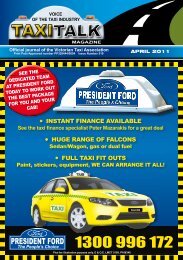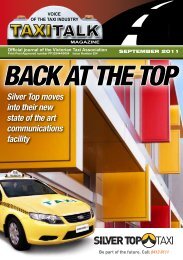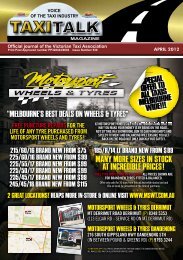You also want an ePaper? Increase the reach of your titles
YUMPU automatically turns print PDFs into web optimized ePapers that Google loves.
Dandenong City<br />
A rich and diverse history<br />
For tens of thousands of years<br />
the area in which Greater Dandenong<br />
is now located was the territory<br />
of the Wurundjeri and Boonerwrung<br />
(or Bunurong) tribes.<br />
It is thought that the name Dandenong<br />
is an adaptation of an Aboriginal<br />
word “Tanjenong” meaning<br />
lofty mountains and refers to the<br />
Dandenong Ranges that overlook<br />
the area. Originally covered with<br />
dense red gum and eucalypt forests,<br />
rich soil and abundant water<br />
supplies, the region easily attracted<br />
early settlers.<br />
European incursions into this<br />
area began when William Hovell<br />
explored the Dandenong Ranges<br />
and Dandenong Creek in 1827. By<br />
the 1840-50s government surveys<br />
of the land created counties and<br />
parishes and land was being auctioned<br />
by 1852.<br />
In 1837, Joseph Hawdon, became<br />
the first squatter to settle<br />
on the Dandenong Creek, establishing<br />
a pastoral run with cattle<br />
he had brought overland from<br />
Sydney. John, Charles and Edward<br />
Wedge (after coming from<br />
Launceston with their father with<br />
400 head of stock) took control of<br />
land which stretched from Mordialloc<br />
to Dandenong and on towards<br />
Cranbourne.<br />
The Rev James Clow arrived<br />
soon after, a parson and squatter.<br />
Clow most likely held some services<br />
for local parishioners at his<br />
homestead Tirhatuan once he was<br />
established.<br />
Wattle and daub huts with<br />
thatched roofs were the most popular<br />
dwellings of the early settlers.<br />
Timber cutters followed and milling<br />
of the native timber became<br />
an important industry. Timber from<br />
Dandenong was used to build<br />
both the shipping wharves and<br />
small blocks were cut to pave Melbourne’s<br />
streets.<br />
The 1840-50s population profiles<br />
show that the Dandenong area not<br />
only had attracted early English,<br />
Scottish and Irish settlers, but settlers<br />
from other countries as well.<br />
As is normal in the advancement<br />
of any community, there<br />
quickly arose the need for the establishment<br />
of Hotels, Dunn’s Hotel<br />
(Inn) was the first, however the<br />
most important Hotel was George<br />
Dunbar’s Dandenong Hotel which<br />
served as a social, cultural and<br />
political centre of town for many<br />
years.<br />
It was also used as a church,<br />
medical centre, coroner’s room,<br />
post office, grocery store, sales<br />
room for land auctions, served as<br />
Council Chambers and a court<br />
house. Hennessey’s Bridge Hotel<br />
and Bowman’s Royal Hotel completed<br />
the quartet. Dunn’s Inn and<br />
Dunbar’s were both used by visiting<br />
clergy to hold services.<br />
The district’s history of medicine<br />
began when Dr Cook settled in<br />
Dandenong in 1854 and conducted<br />
his surgery in a tent pitched in<br />
Kirkham Road. Mr. George Dunbar<br />
of Dunbar’s Hotel was one of<br />
the first medically trained people<br />
in the district. In 1857 Dr Charles<br />
Phillips built Briarhurst in McCrae<br />
Street and developed an extensive<br />
practice.<br />
In 1874 a Railway Construction<br />
Bill was passed and a survey undertaken<br />
of the proposed route<br />
to Sale. In 1875 the line from Melbourne<br />
stopped at Oakleigh. By<br />
1876 the train line went as far as<br />
Berwick and a year later it reached<br />
Drouin. But in 1878 if you wanted<br />
to travel all the way to Sale you still<br />
had to finish the journey by coach.<br />
Dandenong railway station was<br />
erected in 1881. By 1888, Dandenong<br />
was a busy junction, with<br />
trains going ahead to Sale and to<br />
Tooradin. This increased the importance<br />
of the town as a commercial<br />
hub. By 1921 the electrification<br />
of the line was completed.<br />
By the turn of the century Dandenong’s<br />
market town economy had<br />
grown substantially and manufacturing<br />
businesses became attracted<br />
to the area. The Dandenong<br />
Ham and Bacon Factory was one<br />
of these. By the mid 20th Century<br />
Dandenong had become the industrial<br />
heartland for Victoria. D<br />
<strong>Taxi</strong> <strong>Talk</strong> - Voice of the <strong>Taxi</strong> Industry <strong>October</strong> <strong>2012</strong> | 19
















